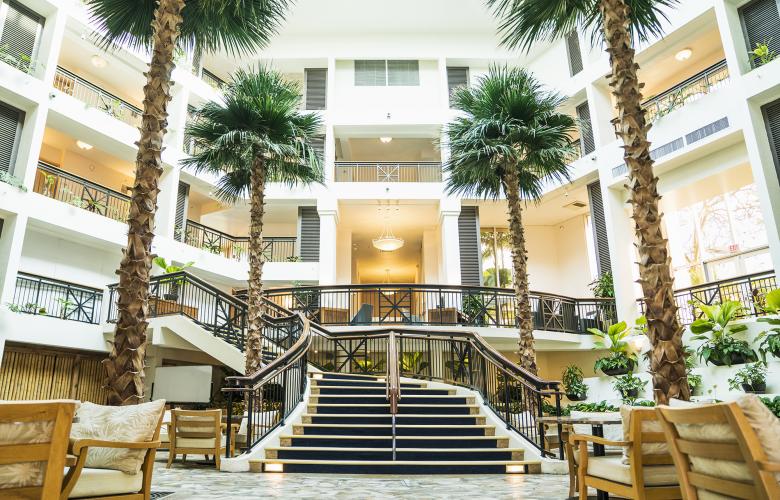Hotels check in to a sustainable future
Contact
Hotels check in to a sustainable future
BMT Tax Depreciation outlines how the businesses can offset the expense of switching to eco-friendly practices through depreciation deductions.
More and more hotel businesses are responding to a desire from consumers to incorporate sustainable practices.
Tactics range from the relatively simple approach of using timers and sensors to control when equipment is powered on, to more costly methods such as installing building energy management systems, on-site power generation, low-carbon construction techniques, and heating and cooling equipment.
Like any business venture, this transition comes at a cost so it’s important for hoteliers to understand tax entitlements like depreciation.
Hoteliers can offset the expense of becoming more energy efficient by claiming depreciation deductions on the building structure and items permanently fixed to it, as well as any fixtures and fittings installed during the transition.
As a building and its assets age, they depreciate in value.
Click here to view the BMT Tax Depreciation website
The Australian Taxation Office (ATO) allows owners of income producing properties to claim deductions for this wear and tear.
Hoteliers can claim depreciation under two different categories - capital works (division 43) and plant and equipment (division 40).
Capital works deductions are available for the building’s structure and any permanently fixed assets such as bricks, mortar and windows.
For most commercial buildings, these deductions can be claimed if the property commenced construction after the 20th of July 1982.
Plant and equipment assets are items that can be easily removed from the property such as hot water systems, air conditioners, exhaust fans and security systems.
Assets may also include energy efficient equipment such as timers and sensors.
Depreciation deductions for these assets are calculated based on the individual effective life of each item as set by the ATO and can be claimed by both owners and tenants.
Owners are eligible to claim deductions for any plant and equipment assets they own.
In certain instances, owners can also claim any assets left behind by previous tenants.
Tenants can claim depreciation on any fit-out they add from the starting date of their lease.
Click here to view the BMT Tax Depreciation website
If a tenant removes items at the end of their tenancy, they may also be able to claim any remaining depreciation for assets that are removed and scrapped when they vacate the premise.
Immediate write-off and low-value pooling rules may also apply if an asset is below a certain value, particularly for small and medium sized business owners.
As plant and equipment items are rarely the same age as the property and are often replaced and updated, there can be significant deductions available.
Given the specific rules and regulation surrounding depreciation, it’s also best to seek expert advice when lodging a claim.
Specialist Quantity Surveyors are recognised as one of the few professionals with the appropriate qualifications necessary to estimate construction costs for depreciation purposes.
A Quantity Surveyor from BMT Tax Depreciation will inspect your hotel and prepare a tax depreciation schedule to ensure every deduction is claimed correctly.
A BMT Tax Deprecation Schedule outlines all available deductions over the forty-year life of the property and charges a one-off fee.
BMT has prepared tax depreciation schedules for commercial properties including hotels, primary production, manufacturing, retail centres, mining, office towers, medical centres and more.
Request a Quote or call BMT Tax Depreciation on 1300 728 726 today.
This is a sponsored article.
More from BMT:
Scrapping can boost a hotel’s cash flow - BMT Tax Depreciation
Reducing fit-out costs when refurbishing your hotel function centre - BMT Tax Depreciation







